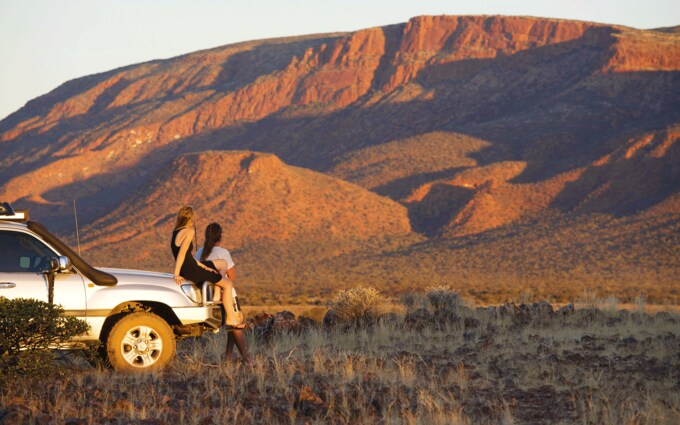As far as classic adventures go, an excellent old-fashioned road trip is pretty high on the list. It’s steeped in exploration and appreciation for the quirks of all the unique places you’ll find along the way. Whether that’s a majestic canyon out west or the finest roadside diner pie, a road trip is your golden ticket to the most extraordinary places accessible by highway, byway, or scenic backroad.
Preparation is just one of many essential tips for road trips, short or long. Our tips for road trips may be well-known to most, but a few may surprise you.
1. Find a Road Trip Inspiration Rabbit Hole (And Dive In!)

Stop oohing and ahhing over other people’s Insta-worthy adventures and put that inspiration to good use. For example, if you feel a twinge of wanderlust when someone posts about amazing Alaska national parks, you can use that as an ah-ha moment, even if you can’t go to Alaska. Ask yourself what about that location sparks your interest. Is it the glaciers, wildlife, or maybe the fresh seafood? Then, use that to plan a similar trip that’s within reach.
Social media is an obvious inspiration source, but you can expand your search to documentaries – a treasure trove of excellent road trip ideas. At the same time, bibliophiles should check the shelves at their favorite used bookstores, where there are often cheap travel guides and books that feature weird and beautiful sights in every state.
2. Start Planning Well in Advance
Although it’s doable to have a successful road trip on the fly, it’s better to allow plenty of time for planning. Start by deciding your trip’s goals and milestones; these might include tourist sites or particularly scenic roadways. Once you establish these goals, determine how long it will take to complete the trip. Assuming it’s longer than a day trip, it’s essential to remember that trip details, such as accommodations, might require reservations months in advance.
Since road trips are often a group adventure, brainstorming and sharing ideas and details is more efficient if you use an online organizational tool like Notion. You can create an easy-to-edit itinerary, make packing lists, track expenses, and collaborate with friends and family.
3. Tips for Mapping Your Road Trip
Knowing your trip’s milestones, you can now map out an itinerary. You’ll first want to calculate the distance between each site or activity. Google Maps makes this easy, especially using its layers tool, which can help you better visualize your journey. From there, use apps such as Road Trippers to help research unusual landmarks or well-rated restaurants along your route.
Regardless of which apps you choose, install them in advance and download (or screenshot) as many maps and resources as possible. Installing apps in advance, plus enabling offline features, will provide peace of mind in areas with limited cell signal access. Lastly, it’s always a good idea to kick it old school by buying a Rand McNally Road Atlas, which includes maps of every state, including cities and National Parks.
4. Looking For Cool Side Trips? Get Creative With Search Words
If you’re planning a road trip, it should come as no surprise that the side excursions are part of the overall lure of the adventure. Getting off the main route to explore often leads to unexpected – and utterly authentic – experiences. Sure, you can search for popular tourist attractions online, but if you want to discover a little-known thrill, search for keywords that will yield more unique results.
Maybe your favorite movie is John Wick 4. Try searching the name of the intended town, plus “John Wick fans,” and see what results come up – maybe a pop-up museum or street art installment? Along those same lines, you could combine the word ‘candy’ with the side trip location and see if there are any fun landmarks or shops to satisfy your sweet tooth. Perhaps you’ll discover a factory that makes a regional sweet treat and offers tours.
5. Avoid This Common Road Trip Planning Mistake
One sure way to create unnecessary road trip stress is to overestimate how many miles you can realistically drive daily. It’s a total bummer if you feel hurried every day of the journey. That aside, a high-mileage daily itinerary reduces the chances of stumbling upon a road trip treasure – some incredible, unexpected delight that you’ll reminisce about for years.
Use this tip as a starting point: limit your driving to eight hours daily, and stop every two or three hours for a break. Strategically, these breaks are great opportunities to visit the cool places you researched, so it’s a win-win.
6. Miles per Day Depends on This Often-Overlooked Detail
As straightforward as this sounds, one additional expert tip will ensure your daily itinerary is successful. Evaluating the distance between each landmark and the road’s quality is crucial. Road quality can significantly impact travel time. For example, you might notice that a snowy mountainous road is also full of twists and turns, or the Google Map street view shows a long stretch of gnarly dirt roads. Ultimately, doing this research in advance will help prevent challenges.
7. Select an Awesome Road Trip Co-Pilot
If your friend or favorite cousin is the human equivalent of a mopey mushroom, they’re probably not co-pilot material. Sure, you love them, but they’re chill to a fault – sitting quietly in the shade until you rouse them into action. As road trip worthy as they may be (their quiet contemplations will make for epic late-night chats, after all), they’re not well-suited to the job of primary co-pilot.
The best candidates for road trip co-pilot are masterful in the art of proactive conversation — someone that creates engaging conversation along endless stretches of corn-flanked roads or desolate desert landscapes. Ultimately, a primo co-pilot keeps a cool head when a wrong turn or unexpected wildlife is crossing the street.
8. Before You Hit The Open Road — Safety Basics
Safety first, folks! Nothing will upend your day’s itinerary quicker than a check-engine light on the dashboard. For this reason, it’s essential to schedule a pre-trip check-up for your car. Ideally, arrange the appointment two weeks before your departure in case of repairs – and potentially difficult-to-find parts are required. This pre-road trip car maintenance should include topping off fluids such as oil and anti-freeze and safety checks like tire pressure.
Along with being mindful of the car, invest in a portable jump starter, preferably with a power bank for your electronics. Similarly, purchasing a AAA roadside assistance program membership will provide additional peace of mind. Lastly, round out your safety-first checklist with a first aid kit, headlamp, and – of course – your driver’s license and proof of insurance.
9. Choose The Best Vehicle and Save on Gas
Depending on how gas-efficient your vehicle is, there are times when renting a car is more cost-effective. Many SUVs, for example, use more gas than smaller sedan-style cars, so think strategically about this considerable expense. The good news is that apps like Gas Buddy can help you find the best price on gas in real-time as you travel. In addition, you can better manage your gas budget by using a navigation app, like Waze, to help avoid idling in traffic jams.
10. Two Apps Every Road Trip Must Have
Let’s say you took a wrong turn and found yourself in a residential area. Suddenly, you have an urgent need for a bathroom. In other words, you’re lost, and although there are plenty of people, there are no public bathrooms. However, avoiding this predicament is easy — if you download the toilet-finding app, Flush before your road trip adventure begins.
Just slightly lower on the urgency scale, parking in cities or near popular tourist attractions can also be a challenge. You’ll be grateful to have ParkMobile on your phone, too, so you can advance plan – and pay for – parking before you arrive at hectic locations.




